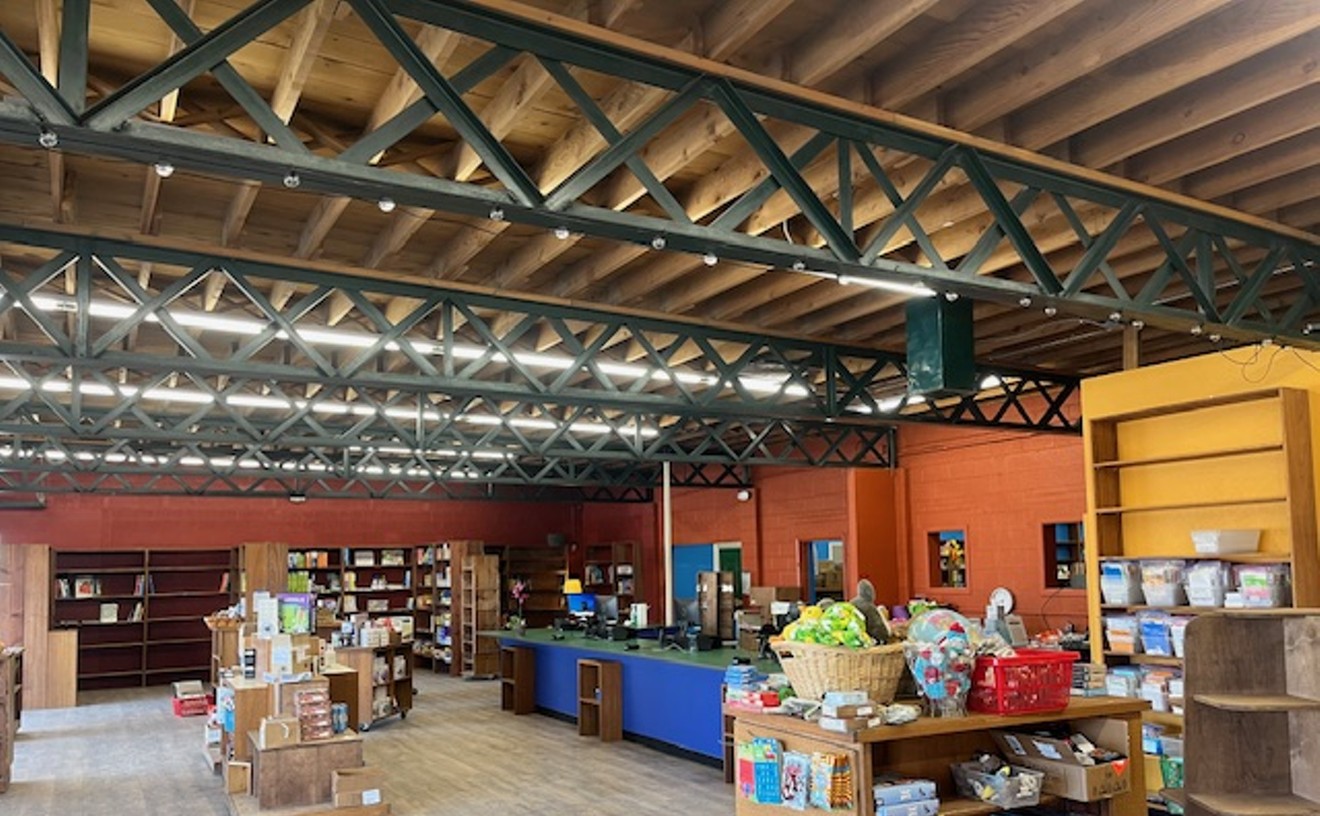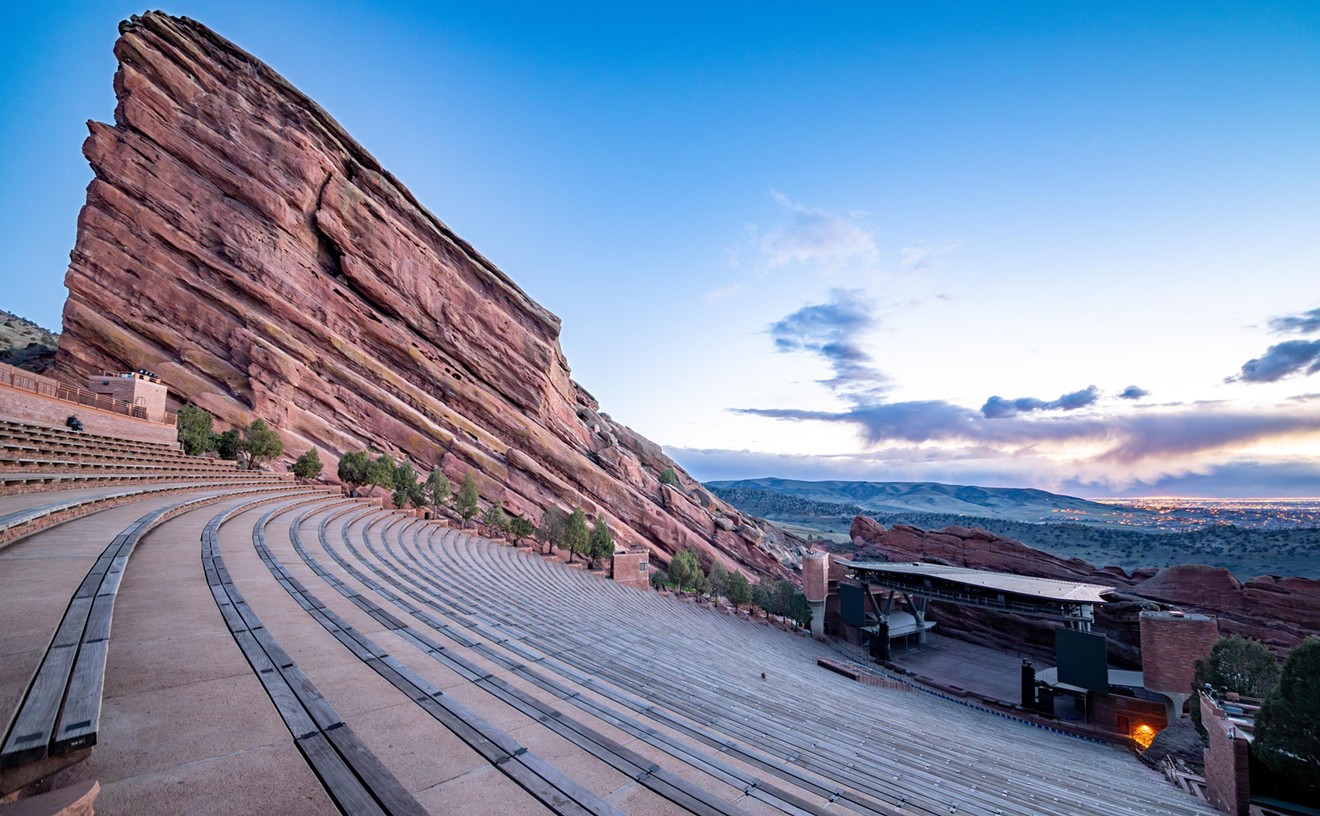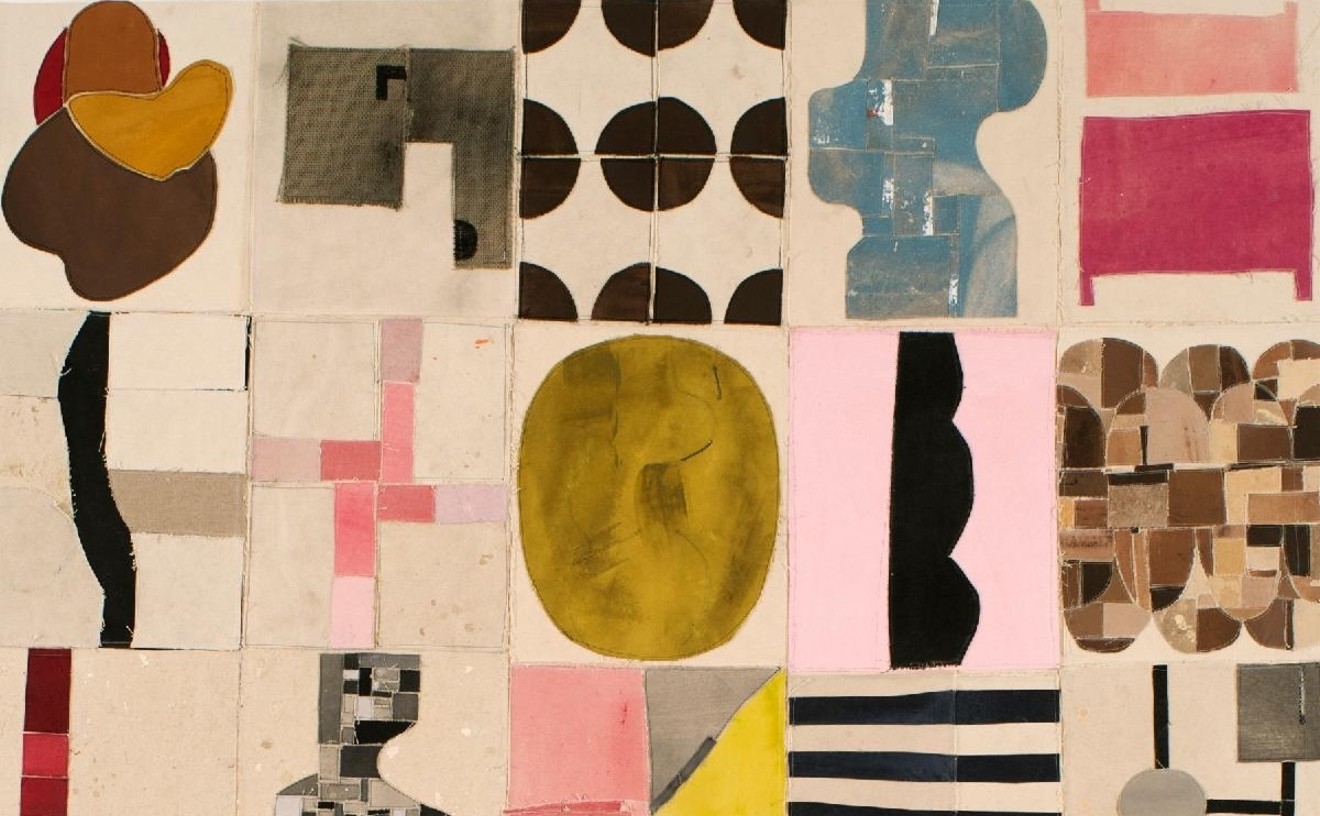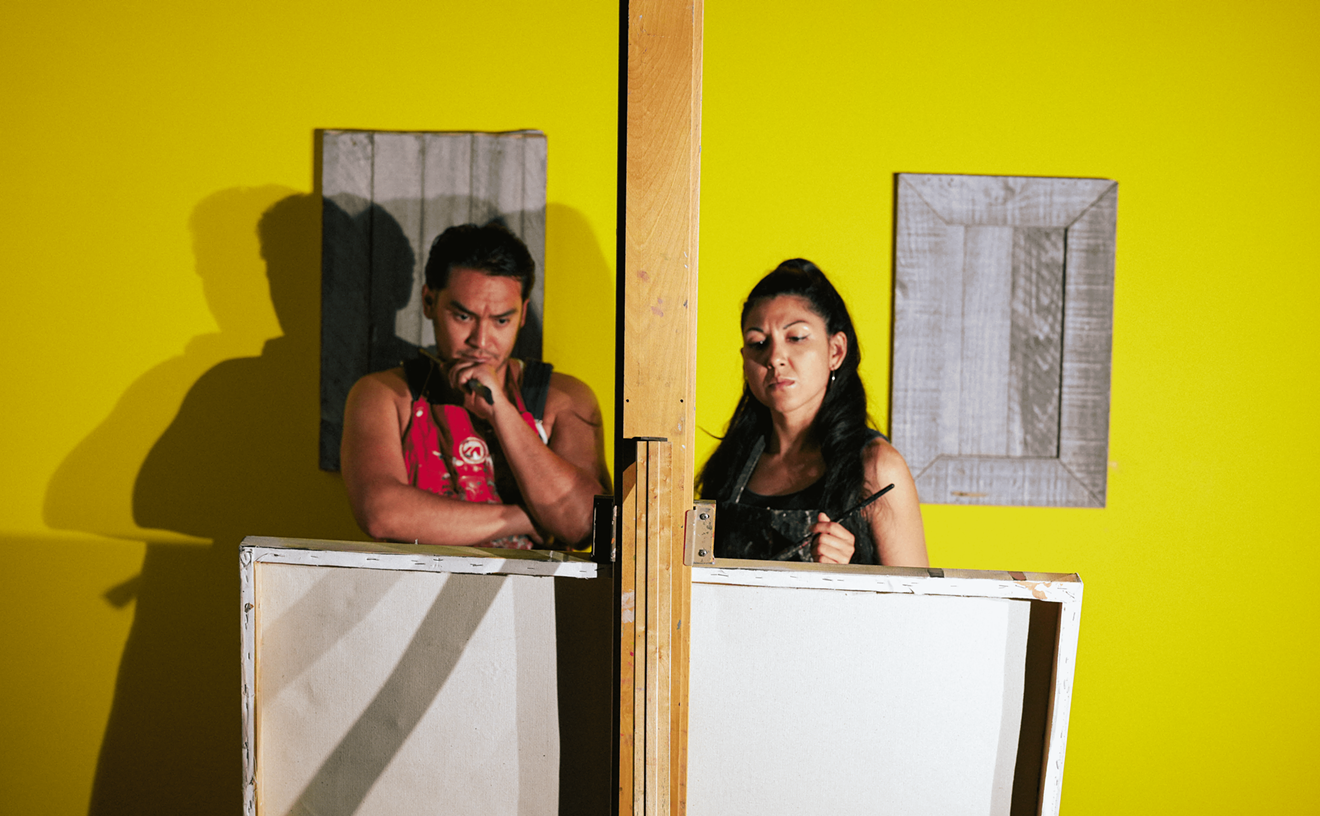DeAndrea was born in Denver in 1941 and raised in the old Italian neighborhood on the west side. "We lived where they built the Valley Highway," he says. "The Italians were moving toward Federal when I was a kid--now they've made it to Arvada." For a time, DeAndrea did his neighbors one better, getting as far west as California, where he lived briefly, but he has mostly remained in the Highland neighborhood and points out that his studio, which he bought in 1969, is only five blocks from where he grew up.
According to DeAndrea, this background played a key role in his development as an artist. "Being working-class, being Italian was more important than what I was taught at the university," he says. "I had an innate love of beauty and a love for Italian Renaissance art--which in the long run was all that mattered."
At North High School in the late 1950s, DeAndrea's art teacher, the late Martha Epp, recognized and encouraged his aesthetic gifts. "I might not be an artist today if not for her," says DeAndrea, who notes that a lot of Epp's former students feel the same way, including abstract painter Dale Chisman. In 1961 DeAndrea entered the fine-arts program at the University of Colorado in Boulder. There, painter and art professor Frank Sampson became a big supporter. "More than anyone at CU, he encouraged me. He's still a friend, still the same kind of guy," DeAndrea says.
DeAndrea recalls that his classic style, in which the human figure is rendered with fanatical attention to detail, began to develop while he was still at CU. "It was through experimentation and was not a conscious thing," recalls DeAndrea. The dominant style of the time at CU and nearly everywhere else was abstract expressionism. "It was a real effort not to do that," he remembers.
Turning away from abstraction and toward representation was a conscious choice for DeAndrea, at least in hindsight, and his approach was based on a critique of modernism. DeAndrea sees twentieth-century modern art as being derived from nineteenth-century concepts. "That art should have a message is a Victorian idea. But art was decorative for a long, long time," he says. The influence of psychology has also had a deleterious effect on art, he adds. "Freud believed that everything had a double meaning, a hidden message. My work has an old-fashioned message. It's about beauty; it's about making people's hearts thump."
Graduating in 1965 with a bachelor of fine arts degree from CU, DeAndrea went on to the University of New Mexico for graduate study but never completed his master's degree. "I was being trained to be a teacher, but I felt I didn't have teacher potential and so decided to work full-time on my sculpture," he says. It was a smart move. In 1969, a year after leaving UNM, DeAndrea met Ivan Karp, director of New York's OK Harris Gallery. Karp gave DeAndrea a solo show the next year, and the artist was soon internationally famous, with his work displayed at prestigious galleries and museums in the United States and Europe. DeAndrea sees the wonderful advantage his ready and enduring fame has given him. "It was a way to keep going," he says. "It brings energy. It's not the fame, it's the acceptance. If the Beatles had kept playing in Liverpool, they wouldn't have gotten so good. I always was trying harder, always going back for more."
DeAndrea was one of a group of realists coming to prominence at the time, but the rest were a generation older. "The other realists, like Duane Hanson, were more mature, more seasoned. I was pure energy. I powered my way through it. The creativity was flowing, and my work was idea-rich," he says, noting that although he is older now, his approach hasn't changed much. "I guess I'm still not seasoned."
Despite his immediate fame almost thirty years ago, it would not be until 1996 that DeAndrea would be feted with a solo show at the Denver Art Museum, which truly illustrates the idea that you're never famous in your own hometown. The show included the well-known DeAndrea sculpture "Linda," a reclining nude, one of the DAM's most popular works since it was acquired in 1984. "Linda" is currently in storage.
Fragments is the first time DeAndrea's work has been seen in the city since the DAM exhibit closed in 1997. The show was the brainchild of Singer director Simon Zalkind. It was on a studio visit last spring that Zalkind had the unusual idea of organizing a show pairing DeAndrea's finished sculptures with his preparatory studies and pieces in experimental states. "It was Simon's idea; the way it looks is the way he wanted it to look. I just let him go, and he proved up to it," says DeAndrea, who is very happy with the show. "I'm tickled. It's like a Christmas present."
When the idea for a DeAndrea show was presented to Zalkind by a boardmember of the Mizel Arts Center, of which the Singer is a part, the gallery director gave pause. "I felt like it was unworkable," says Zalkind, since DeAndrea is best known for his detailed renditions of nude females and the Singer is part of a family-oriented facility (the Mizel Arts Center leases space from the Jewish Community Center). "We have a religious preschool here, so no naked ladies," says Zalkind, kicking up his Brooklyn accent a notch. As if on cue, a group of three- and four-year-olds march through the gallery. "Now, remember our special rule: no touching," the teacher says.
Zalkind was surprised that DeAndrea was interested. "I thought of him in terms of larger venues and with his market being elsewhere. But he was very nice all around, though at first he was skeptical about putting on a show without the naked ladies," says Zalkind.
Few will disagree with Zalkind's own assessment that the pieces he chose for Fragments constitute "a convincing body of work." The spare installation of the multi-space Singer is stunning and will stop visitors in their tracks as they approach the gallery, which is up a flight of stairs just off the lobby of the south entrance of the JCC.
The show begins even before you enter the Singer, with a piece in the gallery's display window next to the entrance. "Untitled (Tera)" is very new; in fact, it's not finished. It is a model for a yet-to-be-cast bronze that will incorporate another figure not included in Fragments. "Untitled (Tera)" is a headless figure of a young ballet dancer in tights. She is seated on a found wooden stool that's painted black. The figure is made of DeAndrea's typical material, cast polyvinyl acetate. The finished piece, unlike the study model here, has a head, but DeAndrea is still working on it. "I've had the head off and on a couple of times," he says.
Entering the first gallery, visitors are confronted with an elegant arrangement featuring a handful of sculptures on stands. They have been scattered throughout the room along with a larger group of studies crowded onto a wall-mounted shelf. The effect is literally breathtaking, and many will respond to the sight with a sigh of delight.
The show leads off with a magnificent bronze bust of a young girl titled "Liv." The piece, originally cast in 1975 and later recast in bronze, depicts DeAndrea's daughter at the age of eight. As in his better-known polyvinyl pieces, DeAndrea has painted this bronze naturalistically. His handling of the skin tones is brilliant, as usual. Unlike his work in polyvinyl, in which he uses glass eyes and human and synthetic hair, the features in "Liv" are integral to the casting and have been painted.
Just beyond "Liv" is "Ariel," a closely associated bronze portrait bust of DeAndrea's other daughter, done in 1996. Although the teenage Ariel is actually younger than Liv in real life, in Fragments she's portrayed as the older of the two. Like "Liv," this piece is a bronze cast that has been painted naturalistically. Both sculptures clearly reveal the ongoing influence of Italian Renaissance art on DeAndrea. They are especially suggestive of the famous polychrome ceramic sculptures created in the fifteenth century by Luca Della Robbia.
But the Italian Renaissance is not the only historical influence flaunted in Fragments. A pair of heads done this year and obviously inspired by classical antiquity are plaster studies for bronzes. Placed on a black painted plaster stand, one bust, precariously positioned on the edge, is painted white and the other black.
Also recalling the glories of the Greco-Roman tradition is "Untitled," a 1999 plaster of a male figure based on an original polyvinyl cast of 1982. This piece is one of a pair; the other is a matching female figure that remained at DeAndrea's home. "Untitled" has a gorgeous stained finish that looks like marble. DeAndrea created the surface by rubbing dry pigments mixed with water over the plaster. He then waxed it and allowed it to weather outside. "But not for too long," he says, since the plaster will eventually melt when exposed to the elements.
Providing a backdrop and, in a sense, a background to these sculptures is the first of three shelves on which experimental heads are arranged. The heads record three decades of DeAndrea's work, and the artist says that each one represents a statue and recalls the experience of working with various models. "The people are gone, but I feel like they're still with me," he says. The heads are made in a variety of materials. Some are in polyvinyl and a few are in plaster, but most are made of Bondo, a malleable plastic chiefly used in automotive repair.
Around the corner, opposite the second shelf of heads, is a reclining figure, somewhat reminiscent of "Linda," called "Untitled (Karen Wlaschek)." Made of polyvinyl acetate draped in cloth, it is a study for a bronze that was commissioned for the Palais Kinsky in Vienna. The piece is not yet cast but is currently at a foundry. Here it's on the floor, but in Vienna it will be mounted on a black stone base.
The final section of the show displays another taste of classicism, with a wall-mounted sculpture of a woman's back in plaster stained with dry pigment. Completed in 1999, it is actually based on an earlier piece. The model for this sculpture was the same one who posed for "Linda."
Across from this sculpture is a Bondo study for the child from "Mother and Child" of 1995. This piece has a creepy quality avoided in most of the others in the show. DeAndrea suggests that the child needs his mother, but others may note that the flesh-colored child also needs a head.
At the end of Fragments is a group of recent bronze heads, some set traditionally on stone bases. Here DeAndrea experiments with patinas. In "Untitled (Lisa McIntyre)," he uses a silvery mottled green; in others he uses gray. "They're all based on silver nitrate, but the colors differ depending on how they're applied," he says. Though these patinated pieces are stylistically akin to DeAndrea's classic painted work, the singular shades of the various patinas lend a traditional quality not seen in his older hyper-realist work, which is represented here only by those shelves brimming with heads.
Zalkind has succeeded in creating a gorgeous display, but he has made some annoying decisions. Though he takes an intellectual approach to art, he is not particularly scholarly. As a result, he has made the indefensible judgment to dispense with identifying labels, which he says would have been "intrusive." Even accepting this preposterous proposition, though, there seems no reason not to have at least provided an exhibition checklist for those who are interested in knowing the date and technique used for each piece. And what about a biographical sketch on DeAndrea? Sure, he's famous, but should Zalkind have assumed that everyone would know the details of his career? Also off the mark is Zalkind's essay, which links the work in Fragments to his own state of mind when he conceived the show. He recalls his mood at the time as being shaded by the "confluence of catastrophes--Kosovo and Columbine," an observation that many will find opportunistic and in questionable taste.
But these shortcomings are of little real consequence, since Fragments is such a treat for the eyes and, without a doubt, one of the strongest art shows presented so far this year.
John DeAndrea: Fragments, through August 29 at the Singer Gallery, Mizel Arts Center at the JCC, 350 South Dahlia Street, 303-399-2660.










